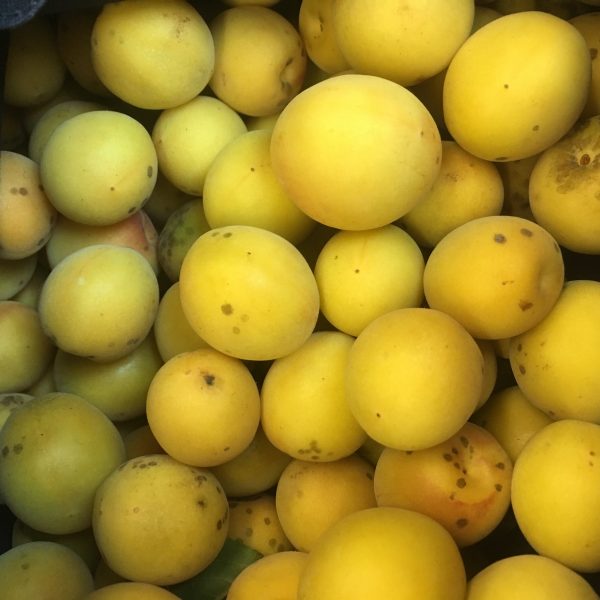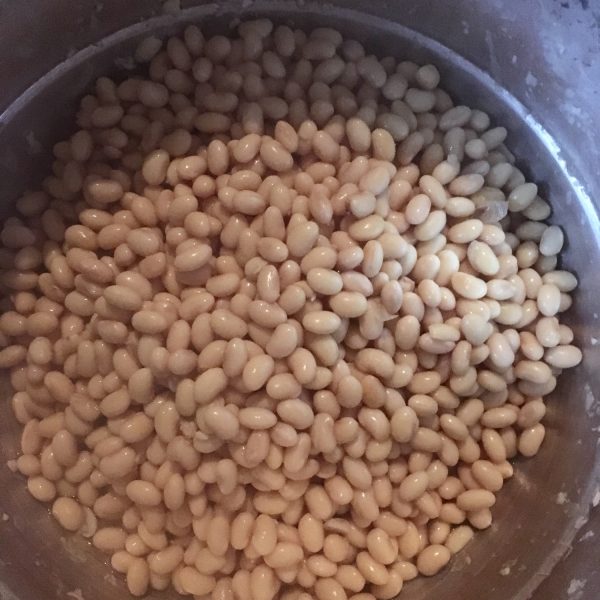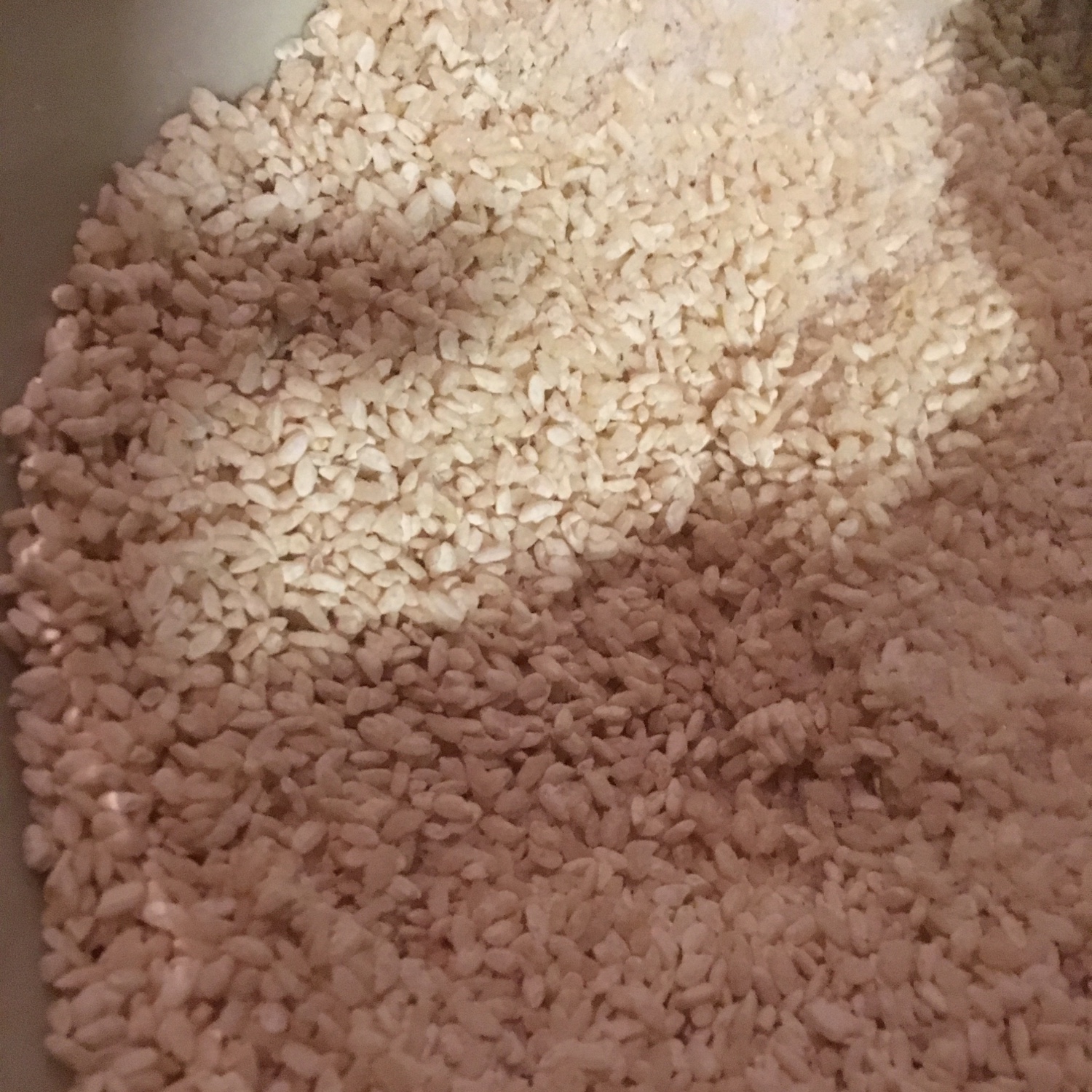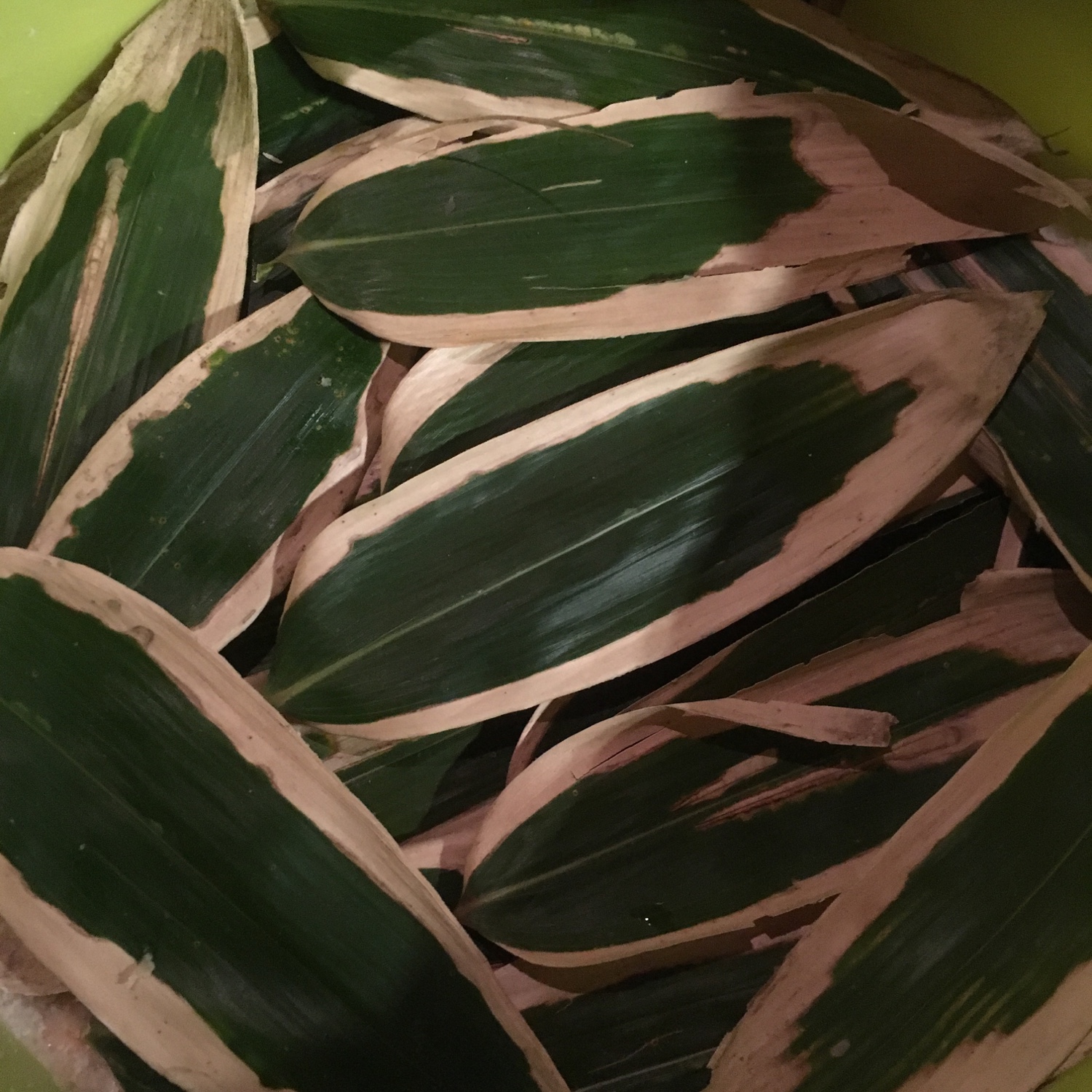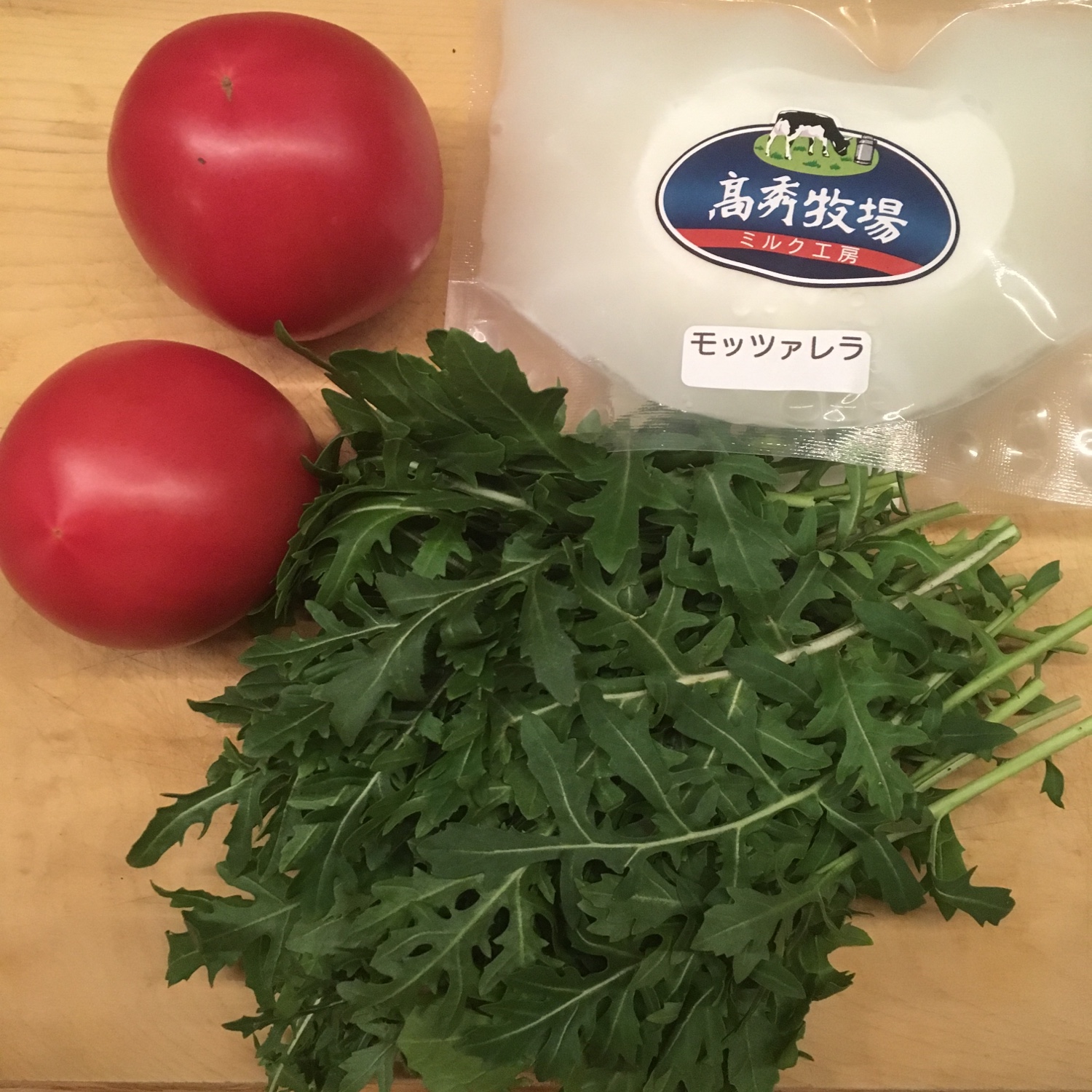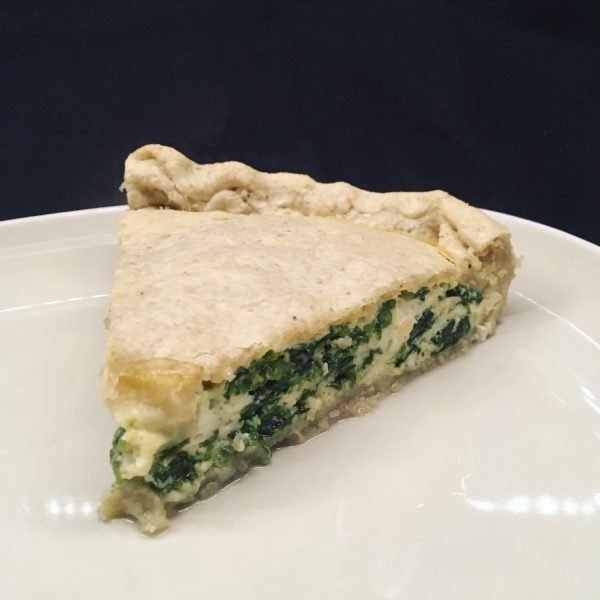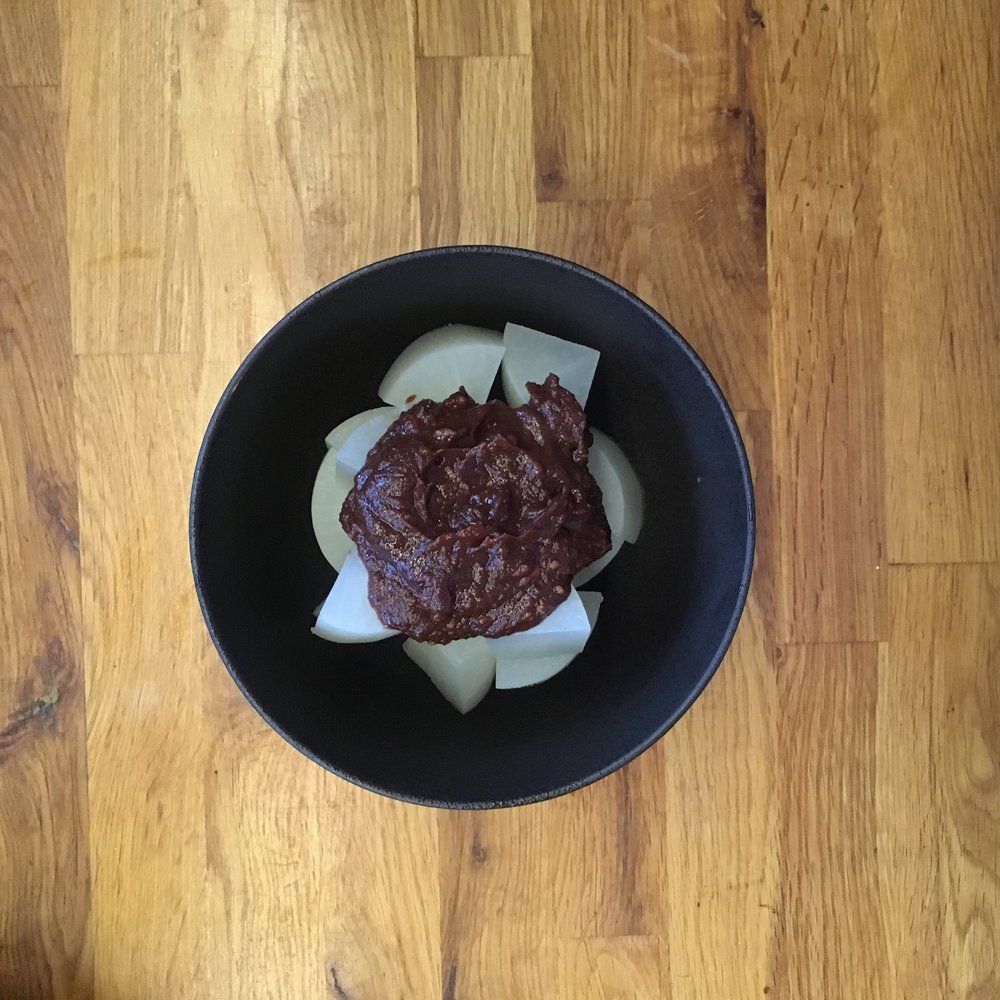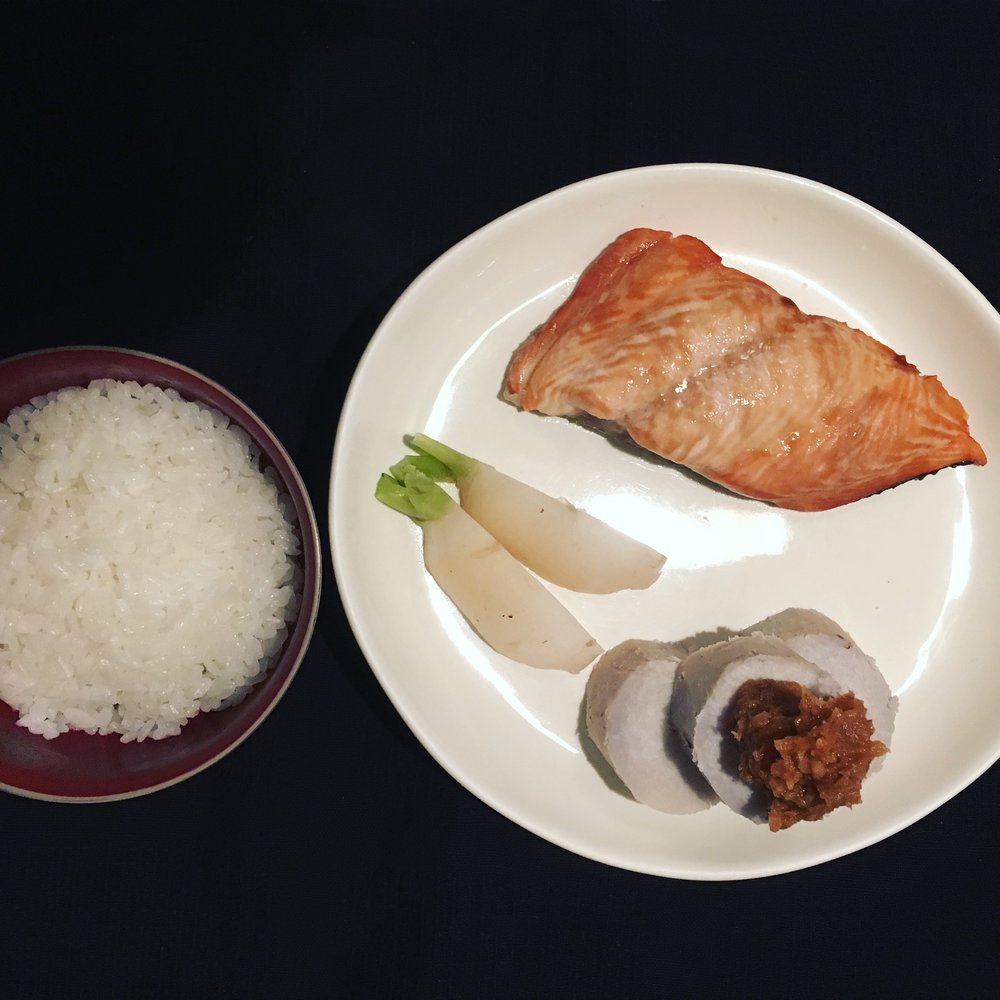June is the time for the rainy season, and every day the weather reminds us that, but it is also the season for plum harvesting and plum pickling.
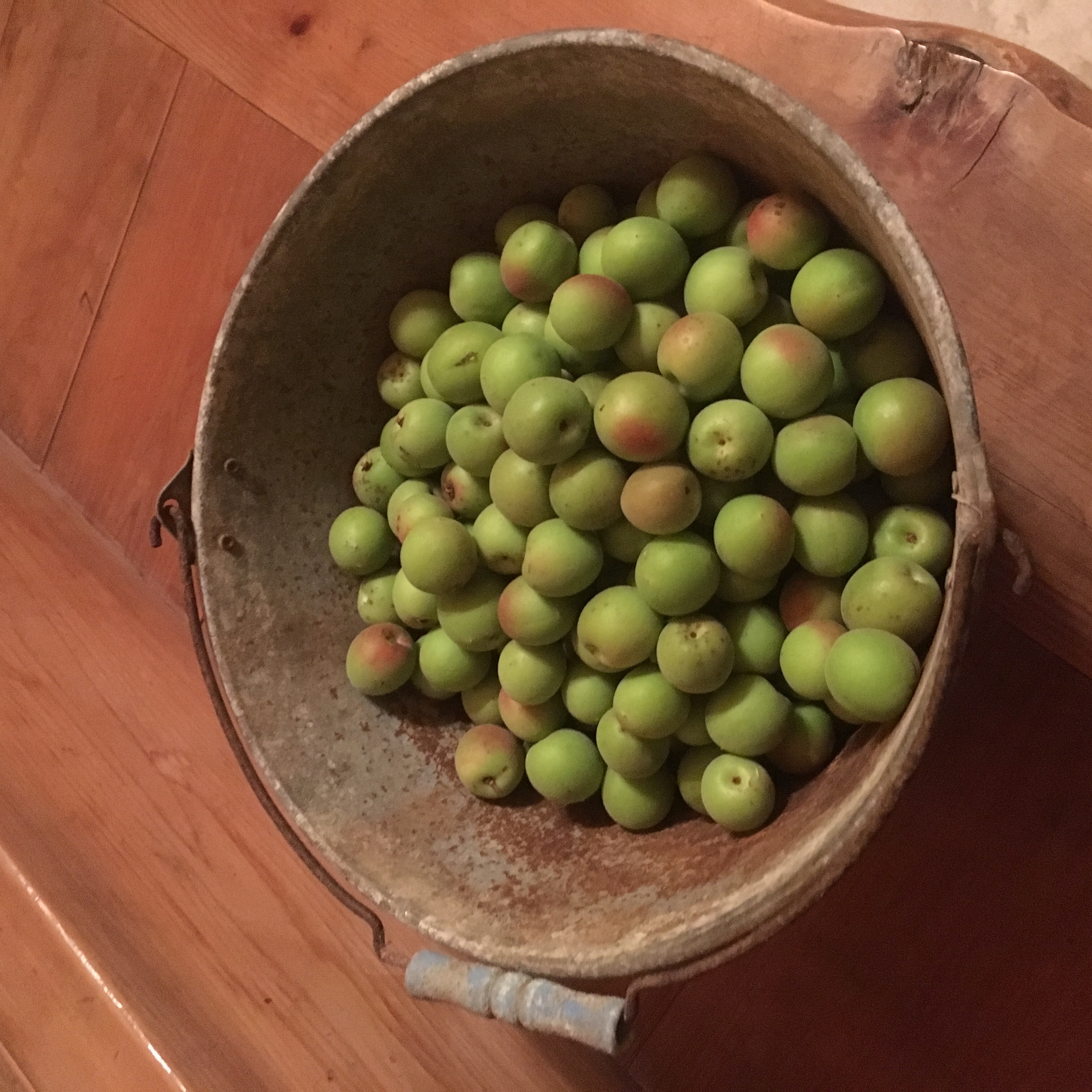
Even though I trimmed many of our plum trees this winter, the amount of fruits they produce it still enormous and it’s also time for giveaways. 1Kg here, 3Kg there… yet the harvesting is tedious and with one rainy day following the previous one, it doesn’t make things easy.
Once harvested I pickled quite a bit of our plums. I usually make plum wine and plum syrup with the green plums and umeboshi with the yellow ones (which is about 7 to 15 days after harvesting the green plums).
But because only our visitors drink umeshu and I still have plenty from last year, and we drink little syrup and again last year I made plenty, I decided to try new recipes. One new syrup recipe and one of savory plums in soya sauce. Because the preparation has to sit for three months I have no idea what it would taste like but just wanted to share that recipe because it looks really nice.
Soya sauce pickled plums
– 1kg of green Japanese plums
– 1/2L of soya sauce
– 4tbs of brown sugar
– 2 pieces of dry konbu (4x4cm)
– a handful of katsuobushi flakes.
Wash the plums and remove the stems. Dry them well. Pick them to make a few small holes in. In a clean and sterile bin, set the plums, add the sugar, the konbu pieces cut in four, the katsuobushi flakes. Cover with the soya sauce. Set to rest for 3 months. Turn the bin every week. We’ll see in the results together in 3 months!!
Have a good week!

